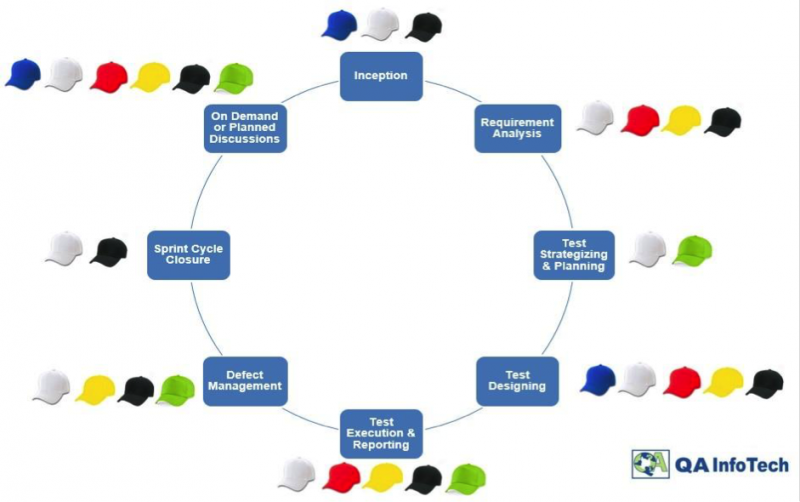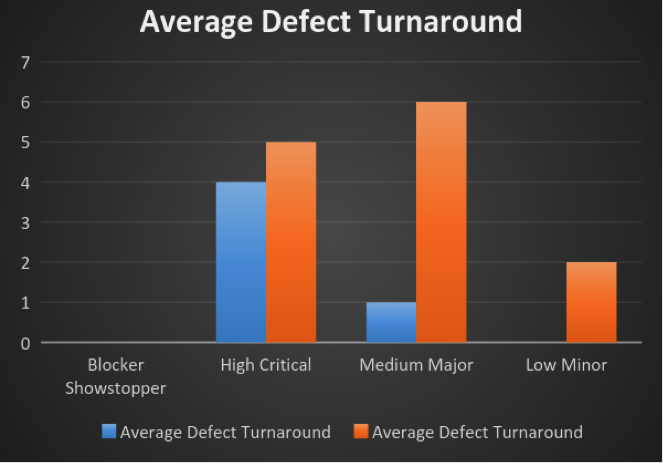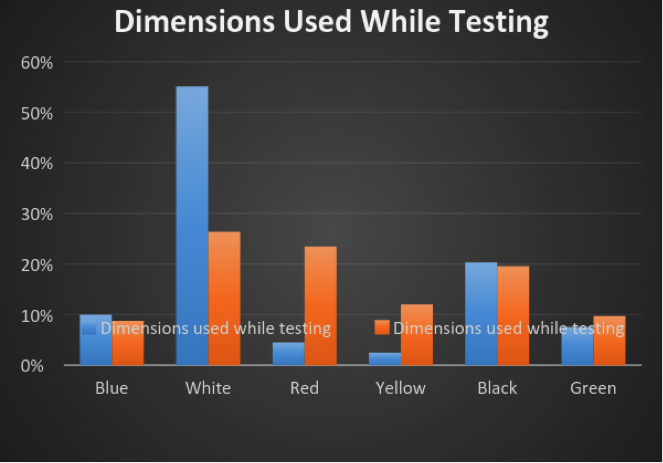As a testing community, we have come a long way over the last decade in enhancing our testing know-how and techniques and leveraging new tools. However, it is not uncommon to hear that we need to think outside the box, which leaves us wondering: What is “outside the box” thinking, and how do we achieve it?
Testers commonly face challenges around one-dimensional thinking, limited ideas, and communication issues as we interact with several entities and deal with ever-changing roles and responsibilities. Some challenges are also triggered by testers working on the same product on an ongoing basis, where comfort can set in and hamper any possible innovation on the job.
Sometimes, all you need to break out of a comfort zone or come up with better approaches is a fresh perspective. Putting on a different “thinking cap” can help you innovate solutions in a whole new way.
The idea of thinking caps is based on the popular book by Edward de Bono, Six Thinking Hats, which was published in 1985. In the book he talks about promoting multi-dimensional thinking by mapping different colors to different cognitive styles. Here’s a quick description of the caps and what they represent:
Blue provides an overview of the situation. When a tester puts on this hat, he should look for the context in any situation or problem. It helps the tester define the purpose of any task at a broad level, requires him to determine the next steps on project execution, and controls the use of other thinking caps. In all, it promotes good contextual thinking.
White analyzes facts and information. This cap requires the tester to examine data, which could be in the form of test cases, bug-tracking tools, state of defects, requirements, user stories, etc. It is a purely neutral thought process that just works from factual viewpoints. The tester is herein able to collect information that promotes educated actions and decisions.
Red triggers passions and emotions. This cap helps the tester explore her gut feelings that might not usually surface in a testing effort. These feelings may be positive or negative, but they are all important from a testing perspective. Red helps the tester bring out an emotional angle to end-user testing, which is slowly gaining in prominence.
Yellow drives optimistic thinking. With this cap, the tester is able to look at product benefits and best possible outcomes while keeping in mind the goal and objective of the testing effort. There is still a certain negative connotation to testing because people think it only looks to break software. But with a yellow cap on, the tester forces himself to step into a positive zone when objectively analyzing product quality.
Black lets the tester explore risks and problems associated with any situation. It helps testers be cautious and look for what could go wrong. The more this cap is worn up front, the more the tester can help minimize risks at earlier stages of product development.
Green brings new ideas and creativity. This cap forces the tester to find alternatives for tackling problems effectively and creatively. Brainstorming and promoting lateral thinking among team members in problem-solving and project implementation are both great ways to bring the team into the green zone.
Of course, there is no magic at work here that will make ideas gush in once testers “put on” these thinking caps. But what this imagery does is give testers adequate time and opportunity to think along specific lines, promoting overall multi-dimensional thinking that may not have been possible in normal circumstances. Such a thought process also fixes any boredom or limited ideas testers may be challenged with.
Although testers often have constrained time, given the short test cycles they operate within, wearing these thinking caps can maximize return while keeping the overall implementation overhead low. All colors are practically implementable in every phase of the testing lifecycle, as shown in the figure below:

Of course, teams are already busy with regular day-to-day activities. A valid question you may have here is, How can a team implement a “thinking caps” model that does not intrude significantly into daily tasks? There are some simple processes you can employ:
Leverage your strengths and craft “pockets of excellence”
When you do test planning, concentrate on using your team members’ specialties and ask specific team members to focus on specific colors. For instance, if someone on the team is very creative, she can be asked to look at the project from a “green” angle. A team member who is proficient with risk analysis can be assigned black, and so on.
Identify gaps and follow a reverse approach
This approach is the opposite of first one. Here, team members’ weak points are identified in an attempt to strengthen them. For instance, a tester who usually is not very creative can be asked to focus on green attributes to hone his ouside-the-box thinking.
Build color-themed test cycles
This method comprises a collective effort where the entire team focuses on a specific color for a certain duration or release cycle. This makes the team more aware and ready to use thinking caps, and it builds testers’ proficiency across all colors.
Integrate caps in defect management
This process is used to measure the team’s progress while using the thinking caps concept. This can be applied by bringing in a new field in the defect management tool: “Which color cap was used while finding this defect?” So for every defect a tester finds, data is collected that can help the manager later evaluate how the team’s performance has been across colors.
These may initially seem like an overhead, but soon these processes will become part of the tester’s core work engine and bring in positive outcomes. The graph below is an example of what we saw when we tried this on one of our testing engagements with just three engineers. The results below from two projects have given us confidence to try this “thinking caps” model across more projects.


Putting on different thinking caps promotes innovation through new ideas, a broader perspective on the project, and a holistic thought process. No one is idea-deprived. The difference truly lies in which of us can identify those ideas and really take them to the next level by applying our resources, time, and effort, as that is when innovation truly takes place. Utilizing different thinking caps is an excellent step to force testers to shape their ideas and bring them to the execution ground.


User Comments
Dear Rajini, Thank you for such an interesting article.
In the graphs at the end, what is signified by the blue and orange bars? The labels for both are the same and I want to make sure that I understand the results.
Many thanks indeed
Alex